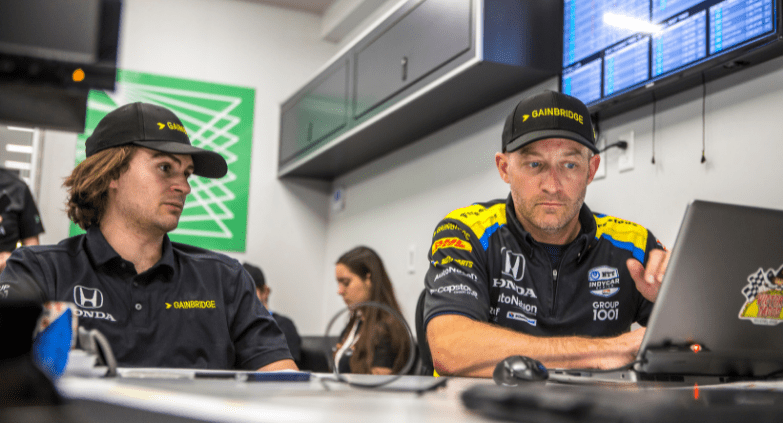Andretti-Zapata project revs up with data from first four INDYCAR races

A multi-year partnership and multi-million-dollar agreement between Andretti Autosport and Zapata Computing that was announced in February is starting to pay off with the identification of use cases and ways to address them.
The two parties said that engineers, data scientists and race strategists from both organizations have been working side-by-side in the Zapata Computing | Andretti Autosport Race Analytics Command Center before, during and after the first four races of the current NTT INDYCAR SERIES season, using Zapata’s Orquestra software platform to build and deploy quantum-ready applications
Andretti and Zapata said the results to date have identified new approaches that can help generate predictive insights, measure and optimize performance and inform race strategy. Specifically, the teams are capitalizing on critical Andretti Autosport data sets to build advanced machine learning (ML) models to better understand tire degradation analysis, identify fuel savings opportunities and improve yellow flag predictive modeling.
However, the results won’t be applied to the next race of the season – this weekend’s 106th running of the Indianapolis 500. “We are not far enough underway to influence any of the upcoming races, including the Indy 500, as we are still in the use case discovery phase to pinpoint which models we can and should select based on the data and the requirements of trying to make fast and accurate strategy decisions at IndyCar races,” Andretti and Zapata said in an email to IQT News.
They added, “On the model building side, the current races are important to understand how decisions are made by the Andretti team and the drivers during a race so we can capture that in the ML model we need to build and the rules we will need to formulate for a strategy tool that will be a combination of both. On top of that, we’ll have to create visualization tools that let engineers consume the predictions quickly and use them effectively during the race. An ML model will first be stood up with recorded data collected by Andretti for each race for several race seasons (including simulation results, telemetry data, car components data, etc.).”
The partnership does not currently involve the use of any quantum computing hardware, but the project continues Andretti’s decades-long efforts to leverage data analysis. “Andretti Autosport’s core business is motorsports engineering, and we’ve relied on conventional data handling and analysis specific to our field for decades,” said Eric Bretzman, technical director at Andretti Autosport. “Each year we collect and process more information than the last. Modernizing our infrastructure will add efficiency and power. There are critical new challenges on our job list today that we are fortunate to share with Zapata Computing to set the direction of our future engineering infrastructure.”
Engineers from Andretti and Zapata also are creating a roadmap of additional use cases to explore, including:
- Deploying a hybrid infrastructure that leverages both cloud and edge computing capabilities. Orquestra helps this initiative because deployment is natively hybrid multi-cloud and on premise/edge.
- Developing enhanced visualization capabilities to accelerate decision making on the racetrack while monitoring model performance and adding model interpretability.
- Exploring acceleration and enhancement of optimization tasks and time series forecasting via quantum-inspired and quantum-enabled algorithms.
“Each race can potentially generate terabytes of data measuring all facets of the experience that you can imagine, such as the vehicle, track conditions, the driver, the pit crew and more,” said Yudong Cao, CTO of Zapata Computing. “The insights hidden in those data points are invaluable when it comes to squeezing out every ounce of performance possible on the racetrack. Most of what we are using today to ‘connect the dots’ is driven by advanced machine learning on classical computers, but we’re already seeing some tremendous opportunities to implement quantum-inspired methods on classical hardware—and then use those methods on quantum hardware backends as they mature on their path to being useful in enterprise production environments.
Dan O’Shea has covered telecommunications and related topics including semiconductors, sensors, retail systems, digital payments and quantum computing/technology for over 25 years.
Image credit: Andretti Autosport





















